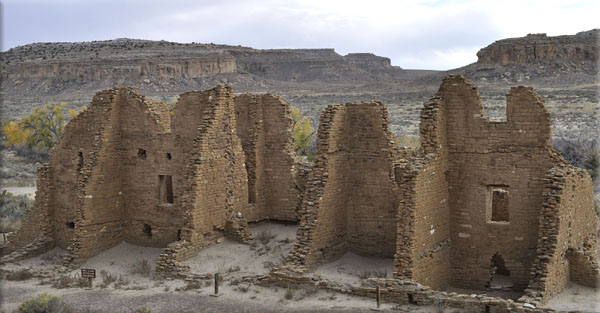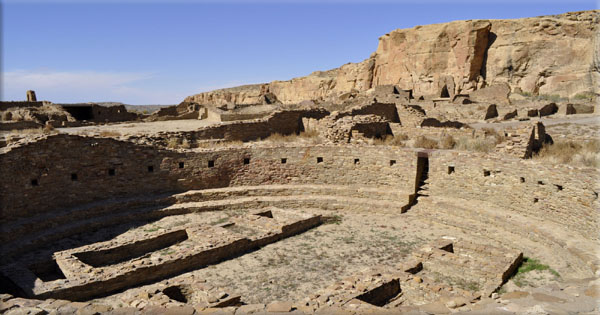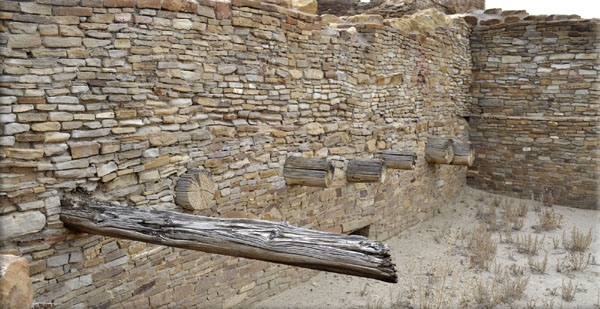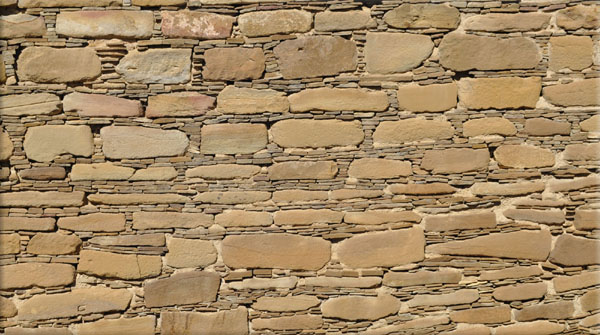Ceremonial Center of the Anasazi World
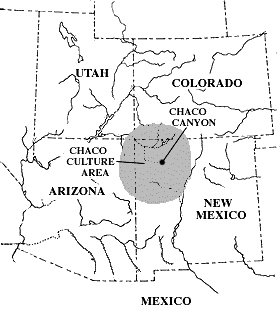
The Anasazi
From the 9th through 12th centuries, the enigmatic Anasazi people of the American southwest built the twelve “Great Houses” of Chaco Canyon in northwest New Mexico. Sandstone blocks, quarried from the surrounding cliffs (Mesa Verde Formation), along with log timbers from distant mountains, were used build the structures in the Chaco complex.
It appears that devastating drought, along with internal strife, led to the abandonment of the Chaco complex, along with the rest of the major Anasazi sites in the southwest, by the mid-14th century. Some researchers believe that the Anasazi people who left Chaco Canyon migrated eastward to form the modern Pueblo peoples of the Rio Grande valley in New Mexico.
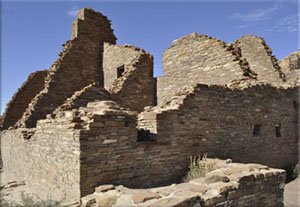 Pueblo Bonito
Pueblo Bonito
Pueblo Bonito, shown above, left, and below, is the largest of the Great Houses in the Chaco complex. It covers two acres and contains as many as 800 rooms, some of which were destroyed in a 1941 rockfall, visible on the image above.
The two Great Kivas, one of which is shown below, are circular structures that served religious functions.
Log Timbers
Stone Masonry Styles
The style of stone masonry varies between the Great Houses at Chaco Canyon. Pueblo Bonito consists mostly of repeating courses of larger and smaller stones, as shown below. Although the masonry was decorative, many researchers believe that, once the stonework was complete, the walls were covered with a plaster derived from the local clay soils.

